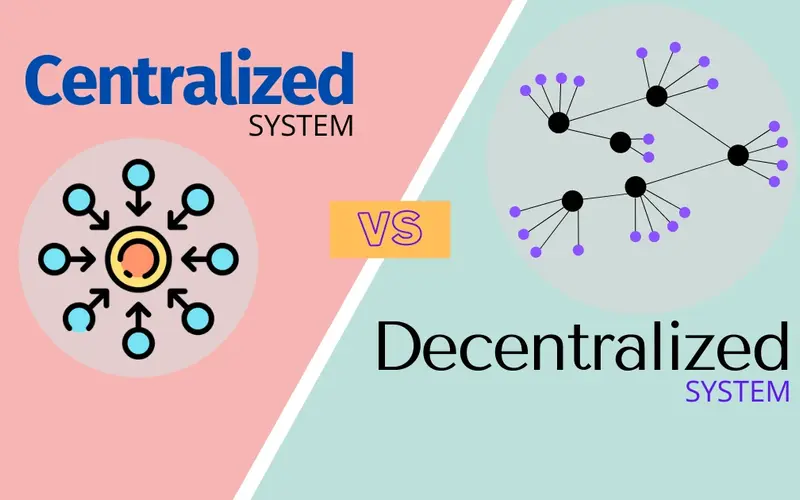
The “blockchain trilemma,” a term coined by Ethereum co-founder Vitalik Buterin, describes the fundamental challenge in designing a public blockchain. It posits that a blockchain can only achieve two of three core properties at a time: decentralization, security, and scalability.
This inherent trade-off forces developers to make design choices that prioritize certain aspects at the expense of others, which is why different blockchains have different capabilities and use cases.
The Three Pillars
Let’s break down each of the three components:
- Decentralization: This is the core philosophical principle of blockchain. A decentralized network is one where power and control are distributed among a large number of participants (nodes) rather than a single central entity. This makes the network censorship-resistant, resilient to a single point of failure, and trustless. Anyone can join the network, run a node, and verify transactions, which ensures a high degree of transparency and integrity.
- Security: This refers to the network’s ability to resist attacks, fraud, and malicious manipulation. A secure blockchain is one where it is computationally and economically unfeasible for a bad actor to alter past transactions or take control of the network. Security is typically achieved through robust cryptographic algorithms and a strong consensus mechanism (like Proof-of-Work or Proof-of-Stake) that provides a powerful economic incentive for honest behavior.
- Scalability: This is the ability of a blockchain to handle a high volume of transactions quickly and affordably. Scalability is what enables a network to grow and serve a large user base without becoming congested, slow, and expensive. For a blockchain to compete with traditional financial systems like Visa, which can handle tens of thousands of transactions per second, it must be highly scalable.
The Inherent Trade-Offs
The trilemma arises because these three properties often work in opposition to one another.
- Decentralization vs. Scalability: Increasing decentralization often comes at the expense of scalability. A highly decentralized network, with a large number of nodes that must all agree on the state of the blockchain, takes longer to reach consensus. The more nodes that need to verify a transaction, the slower the network becomes. This is a key reason why highly decentralized networks like Bitcoin have low transaction throughput.
- Security vs. Scalability: Achieving a high degree of security often requires thorough and resource-intensive verification processes, which can slow down the network. Speeding up a network to increase scalability may require shortcuts that could compromise its security.
- Decentralization vs. Security: While a high degree of decentralization can enhance security by making it harder for a single entity to control the network, some argue that an overly decentralized network could become less secure. If the barrier to entry to run a node is too low, the network could be susceptible to a “Sybil attack” where a single entity controls a large number of fake nodes to influence the network.
Solutions to the Trilemma
The blockchain community is actively working to solve the trilemma through a variety of innovative approaches:
- Layer 1 Solutions: These involve making changes to the core blockchain protocol itself.
- Proof-of-Stake (PoS): PoS consensus mechanisms are inherently more energy-efficient and can achieve faster transaction times than Proof-of-Work (PoW).
- Sharding: This technique divides a blockchain into smaller, parallel segments called “shards,” each of which can process transactions independently. This dramatically increases the network’s overall throughput without compromising its security or decentralization.
- Layer 2 Solutions: These are separate protocols built on top of the main blockchain to offload the majority of transactions, thereby improving efficiency without compromising the security and decentralization of the base layer.
- Rollups: This is a leading solution that bundles hundreds of transactions off-chain and then submits a single, compressed “proof” to the main blockchain. This dramatically increases throughput and reduces costs while inheriting the security of the underlying network.
The blockchain trilemma is not a law of nature but rather a description of the current challenges in a nascent technology. The ongoing innovation in Layer 1 and Layer 2 solutions suggests that it is possible to achieve a balance between decentralization, security, and scalability, paving the way for a more unified and functional Web3 ecosystem.



